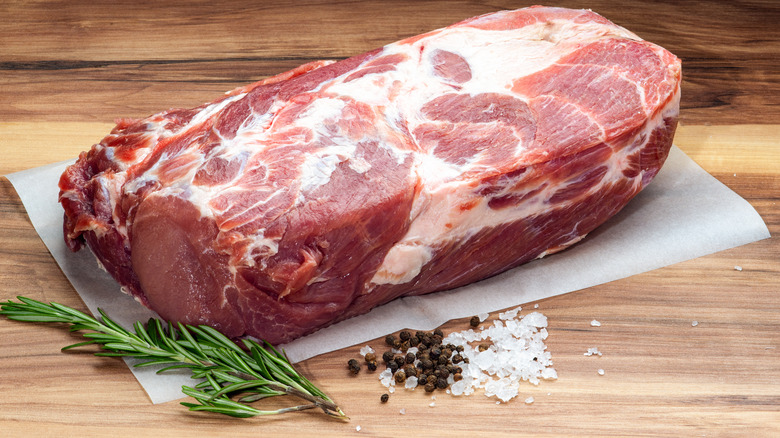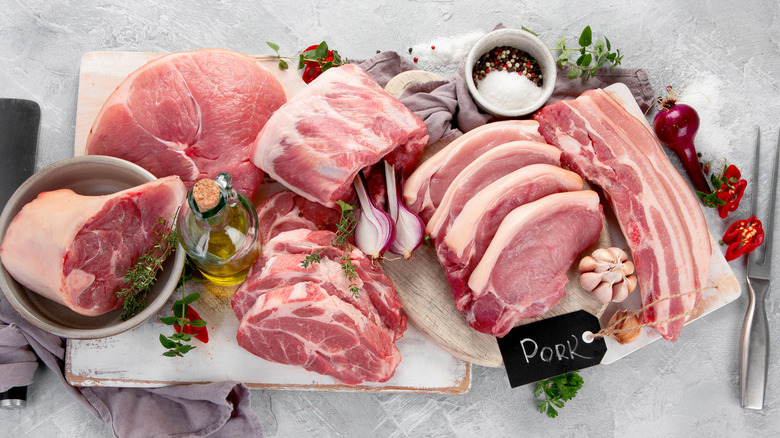Here's What You Should Look For When Picking Out A Pork Shoulder
Wondering what the difference is between pork butt and pork shoulder? Not sure how much fat marbling on a cut of pork shoulder is ideal? We've got answers for you. Pork shoulder is a fantastic choice for budget-friendly flavor. The whole shoulder consists of the pork butt (higher up, near the head) and the picnic shoulder (lower, at the leg), so you'll typically buy one of these cuts, says BBQ Host. These each weigh 4 to 10 pounds, which means you get plenty of meat and tasty fat from the shoulder region.
Picnic shoulder tends to be slightly leaner than pork butt since it contains less fat and connective tissue, notes The Kitchn. If you're hoping to cook the meat low and slow, then shred it for tacos, sauces, and more, opt for the butt. The shoulder, meanwhile, can be cooked in slices. Whichever part you prefer, a few tricks will help you pick out the best piece at the butcher counter.
Getting the perfect cut
Pork shoulder, thanks to the generous proportion of fat to meat, is pretty difficult to mess up, even if you're working with an inexpensive cut. But there are still a few things to look out for when you're browsing the meat aisle. BBQ Champs recommends visiting the butcher, which is likelier to have bone-in pork shoulder that is not "enhanced" with a moisture solution like supermarket versions. As for appearances, make sure the meat is deeply red and pink, avoiding cuts that are dull in color or have a gray tinge, which hints that the meat is old and low in quality. Next, look out for good marbling, or lots of white strips of fat that will result in a melt-in-your-mouth texture when cooked.
Fat is incredibly important to making flavorful meals, especially when it comes to meat. According to America's Test Kitchen, that's because exposing volatile fatty acids to heat oxidizes the acids, leading to a heightened flavor experience. And while low-fat meats are popular for some purposes, the pork shoulder is not a cut of meat where you want to skimp on fat — because a thorough distribution of fat between muscles means the meat will be more tender, says Fine Dining Lovers. With a large cut of meat like pork shoulder, especially, this network of fat will ensure that each bite is succulent, from the outer crust to the very middle.

